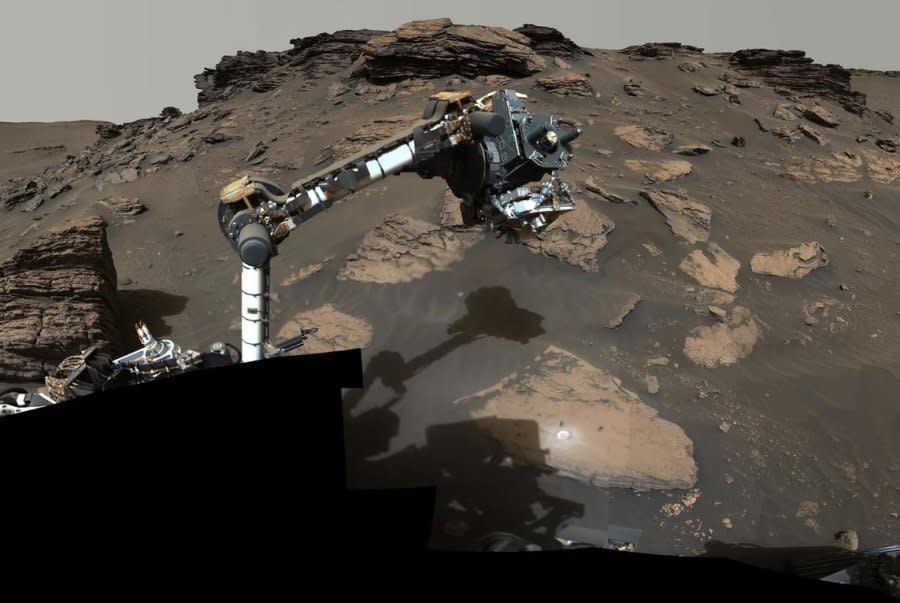NASA engineers trying to fix stuck dust cover on Perseverance Mars rover camera

Feb. 13 (UPI) -- NASA engineers are working to close one of two dust covers, stuck open on a camera aboard NASA's Perseverance Mars rover, to help scientists resume collecting crucial data on the Red Planet, the space agency announced Tuesday.
The cover prevents dust from accumulating on the optics of the Scanning Habitable Environments with Raman and Luminescence for Organics and Chemicals, or SHERLOC instrument, which is mounted on rover's robotic arm.
With the cover stuck in the open position, the camera cannot use its laser on rock targets and cannot collect spectroscopy data. It can, however, still use WATSON -- or the Wide Angle Topographic Sensor for Operations and Engineering -- a color camera on SHERLOC, which is used to take close-up images of rock grains and surface textures.
Since the problem was discovered on Jan. 6, engineers have been working to determine the cause and possible solutions, including sending commands to the instrument to alter the amount of power being fed to it.
While SHERLOC is NASA's main data-collecting instrument on Perseverance, there is some overlap with six other instruments. PIXL, or Planetary Instrument for X-ray Lithochemistry, and SuperCam can also perform spectroscopy.
Perseverance has been searching for signs of past microbial life since it landed on Mars nearly three years ago, on Feb. 18, 2021. SHERLOC has scanned and provided data on 34 rock targets and created 261 hyperspectral maps.
Last month, Perseverance verified lake sediments on the floor of the Jezero Crater which scientists believe was filled with water in an ancient lake.
The Mars 2020 Perseverance mission is also part of NASA's Moon to Mars exploration, which includes Artemis missions to the Moon that will prepare crews for human exploration of the Red Planet.
Perseverance data collection has had help from NASA's Ingenuity helicopter which took its final flight on Mars last month. Ingenuity's mission lasted for almost 1,000 Martian days, or nearly three years, covering nearly 11 miles of ground in 72 flights before the 4 lb. helicopter suffered rotor blade damage and communication issues during its last outing.
"The sols won't be the same without the Mars Helicopter," NASA's Perseverance Mars rover wrote Jan. 25, in a post on X, with photo of Ingenuity and an image of Perseverance's robot arm.
"Thanks Ingenuity, for being my partner in exploration from the very beginning."
The sols won't be the same without the #MarsHelicopter.#ThanksIngenuity, for being my partner in exploration from the very beginning. https://t.co/mFAg7Lwxnp pic.twitter.com/uoi4bXXa9Y— NASA's Perseverance Mars Rover (@NASAPersevere) January 25, 2024

